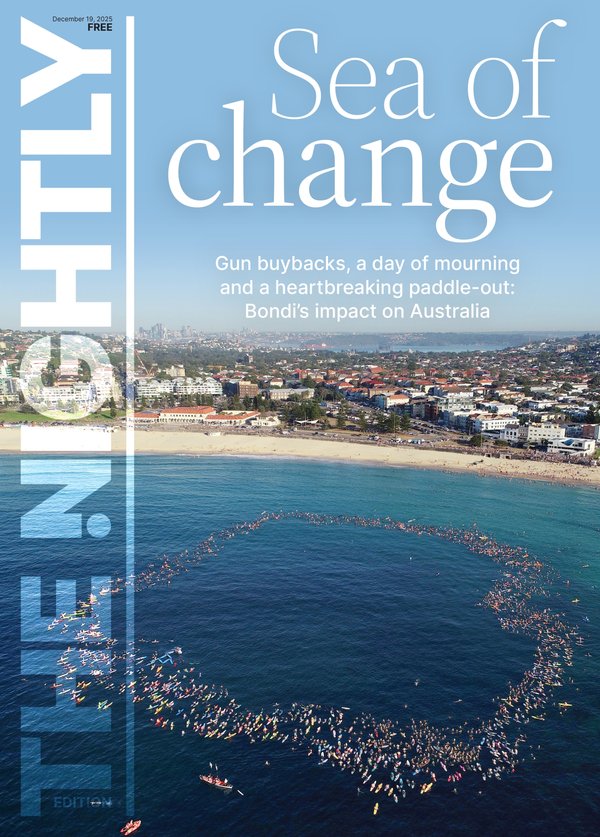How corrupt Hamas leaders divert Western aid to fund their own obscenely lavish lifestyles
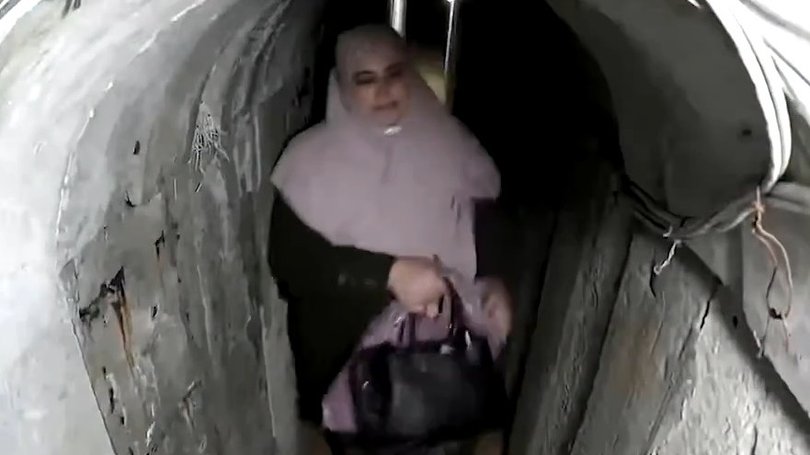
The image is striking in its incongruity. In the concrete and gloom, amid the detritus of terror and war, the wife of former Hamas leader Yahya Sinwar makes her way through a tunnel – deep beneath the streets of Gaza – clutching what looks like a Hermes Birkin bag worth £26,000 (AUD$50,000).
Nothing encapsulates the corruption of Hamas’ leadership in a single image like Samar Muhammad Abu Zamar’s luxury accessory.
Nothing more pointedly illustrates how Gaza’s leaders live in splendour while ordinary Gazans moulder in poverty.
Sign up to The Nightly's newsletters.
Get the first look at the digital newspaper, curated daily stories and breaking headlines delivered to your inbox.
By continuing you agree to our Terms and Privacy Policy.When the Israel Defence Forces (IDF) eventually raided the subterranean hideout last week, they claimed to have found, alongside weapons and ammunition, “millions” of Israeli shekels (around one million equates to just over £200,000, AUD $$389,000).
When it comes to Hamas, this type of cash – which is to say, this type of corruption – is not an exception but the norm. Sinwar himself was “martyred”, to use Hamas’ term, in Rafah in the Gaza Strip last Wednesday.
But others of the terror group’s commanders prefer to loll in luxury in the Gulf state of Qatar.
Three of them – Ismail Haniyeh, who was assassinated by the Israelis in Tehran on July 31, Moussa Abu Marzouk and Khaled Meshaal – were worth a reported £8.8 billion ($17b) combined.
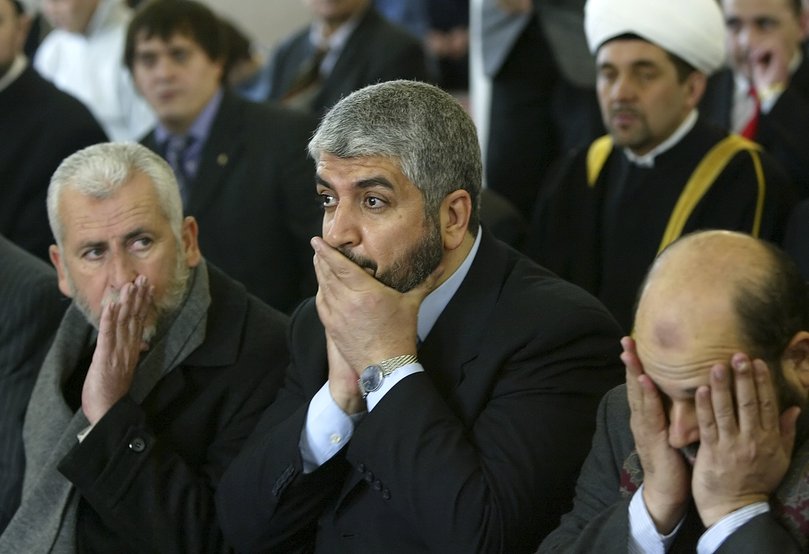
Meshaal, who may well be the next Hamas leader, is worth an estimated £3.2 billion ($6.2 ) alone, according to the Israelis.
You could feed and house the whole of Gaza for that.
The three commanders are said to have lived for the most part at the Four Seasons hotel in Doha, with its two pools, private beach and the 5300 sq ft royal suite that comes with three balconies and a grand piano. Hamas has previously hosted events at the hotel.
Meshaal gave a Press conference there in 2015 and the group held a reception at the hotel in 2016 with then Turkish prime minister Ahmet Davutoglu.
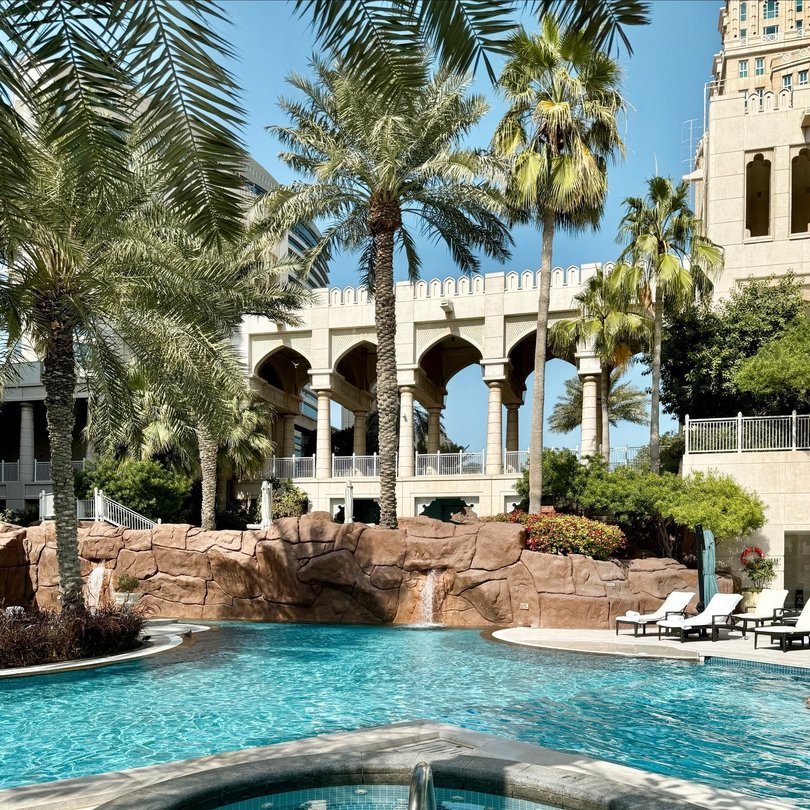
Meanwhile, in Hamas-run Gaza, the unemployment rate is 45 per cent and the average salary just £240 ($466) per month.
But Meshaal, who in 2013 invited photographers from Getty Images to follow him for an obsequious “day in the life” feature, loves nothing more than being pictured enjoying the services of a private jet while ordinary Gazans struggle to leave the Strip – sitting at a table crowded with different dishes while many of his people face famine, and playing table tennis in a marble-floored building while Gazans live under heavy bombardment.
So far, so obscene. But where does all this money come from?
Sadly, a good deal of it comes from you and me.
Between 2014 and 2020, UN agencies, funded of course by the taxpayers of member countries, spent nearly £3.6 billion ($6.9b) in Gaza, more than 80 per cent of which was channelled through UNRWA (the United Nations Relief and Works Agency for Palestine Refugees).
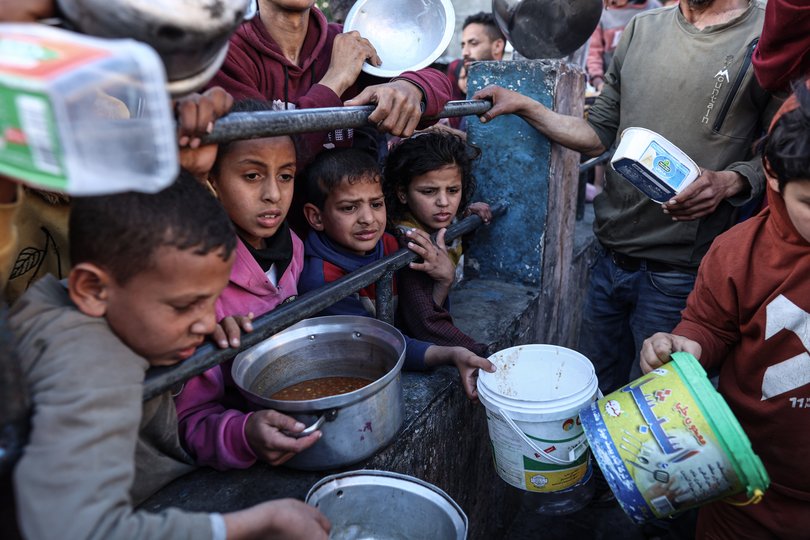
Much of that cash, however, didn’t find its way to Gazans in need but was stolen by their leaders – either to fund their own lifestyles or to divert towards their demented terror campaign.
The scale of this theft appears to be vast.
In June, some 100 Israelis, at least one of whom had been a hostage in Gaza, filed a suit against UNRWA at a New York federal court.
They allege current and former UNRWA officials were aware that Hamas had diverted more than £800 million ($1.5b) from the agency to pay for weapons, tunnelling and other terrorism.
Even if UNRWA officials didn’t know this theft was taking place, a 2018 report from the French organisation, Key Aid Consulting, identified risks of “misappropriation, fraud, corruption, double-counting and any irregularity considered as a diversion of cash grants or vouchers from legitimate uses” in relation to Hamas’s regime on the Strip.
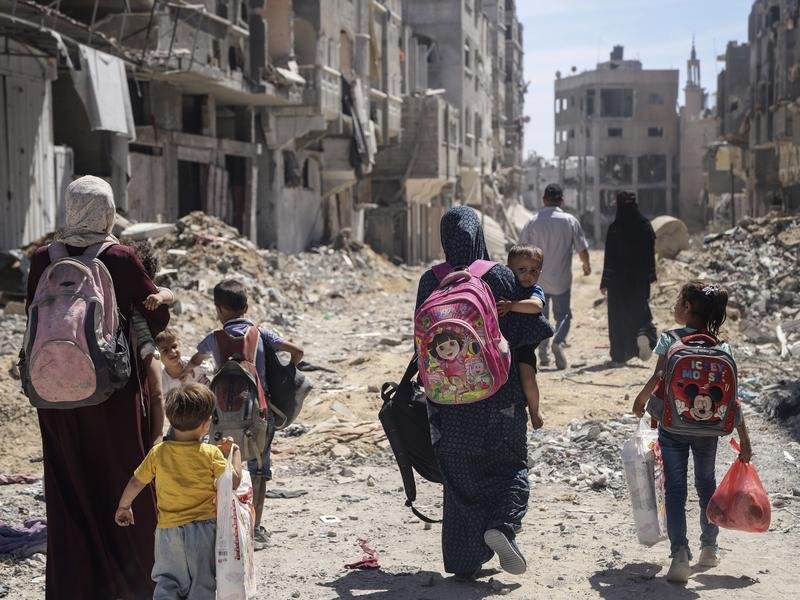
Earlier this year, I spoke with Juliette Touma, UNRWA’s director of communications. She insisted “there is no diversion of UNRWA aid in Gaza. UNRWA are direct implementers. We have control of every step of the delivery process from beginning to end”.
But critics believe the corruption is disgusting. Even the aid sacks containing food staples provided by UNRWA do not escape its grasp.
The IDF discovered several of these bags in Yahya Sinwar’s hideout and his fellow terrorists have also used them to store weapons and even filled them with sand to build tunnels.
It’s clearly not just Sinwar’s wife who enjoys the trappings of wealth.
Last year, a Palestinian journalist claimed that Maaz Haniyeh – son of the late Hamas chairman Ismail – is known as “the father of real estate” in Gaza for his sprawling portfolio of high-end villas and other properties, including multiple apartments in the Al-Zaharna building, a five-story apartment block, apartments in a Qatari housing project in Khan Younis, a villa near the main football stadium and much else.
Last year, too, the IDF published receipts showing that Maaz had spent around £28,000 ($54,500) on luxury jewellery, an amount equivalent to roughly ten years’ salary for the average Gazan.
Beyond his family’s property empire, he enjoyed flying between Tehran, Istanbul, Moscow and Cairo in a private jet: this was a terrorist who enjoyed apeing the life of a diplomat.
Meanwhile, his fellow expat in Qatar, Khaled Meshaal, reportedly smuggled in £1.2 billion ($2.3b) in cash from Hamas’s headquarters in Damascus, Syria, when he moved to the emirate during the uprisings of the Arab Spring in 2010.
Senior Hamas officials who choose to stay in Gaza also live in relative splendour. In January, the IDF raided a Gaza City property owned by Marwan Issa, the former deputy commander of Hamas’s military wing, who was killed a few weeks later in an Israeli strike.
The IDF released footage showing a huge villa with a big swimming pool, a separate Jacuzzi and an immaculately tended lawn.
The group has income streams beyond UNRWA, of course.
Its main benefactor is Iran: an odd partnership, given that Tehran is an extremist Shia state while Hamas are genocidal Sunnis.
But Iran sees Hamas and other proxy terror groups as vessels through which it can achieve perhaps its primary foreign policy goal: weakening and eventually destroying Israel.
Tehran’s mullahs have nurtured Hamas for decades – Palestinian sources admit that Iran was handing over tens of millions as far back as 1994.
Hamas is estimated to have received about £2 billion from the mullahs since 2014.
Meanwhile, ordinary Iranians live under severe sanctions.
Iran also trains Hamas fighters, supplies them with weapons and generally does all it can to help them become more effective terrorists.
Of course, the mullahs’ favourite terrorist proxy is not Hamas but Hezbollah, the 100,000-strong terror group that controls large parts of Lebanon.
Hezbollah and Iran’s leaders share not only a hatred of Israel but are also united by following the same branch of Shia Islam.
On Tuesday, Israeli intelligence claimed to have discovered astonishing evidence of the scale of Tehran’s support: a Hezbollah money bunker underneath a hospital in Beirut that reportedly holds $500 million in cash and gold.
IDF spokesman Daniel Hagari criticised Hezbollah for concealing their stash beneath civilian facilities and called on Lebanon’s government to prevent it being used to spread terror.
“This money could, and still can be, used to rebuild the state of Lebanon,” he said.
Meanwhile, Fadi Alameh, director of the Al-Sahel hospital, denied the existence of the bunker and invited journalists to tour the facility.
Either way, the vast sums that Iran gives to Hezbollah are not in doubt.
According to an Arabic newspaper published in the UAE, former Hezbollah chief Hassan Nasrallah amassed a reported fortune of one billion dollars before he was eliminated last month by an Israeli “bunker buster” bomb 60ft under the southern suburbs of Beirut.
Israel has also bombed 30 facilities associated with Al-Qard Al-Hassan, a bank that has been called Hezbollah’s financial wing and which, despite US sanctions, has kept the flow of Iranian cash constant.
Back in Gaza, funding from Qatar has proved instrumental to Hamas’ operations.
Washington’s Foundation for Defence of Democracies reports that the emirate contributed more than £120 million ($233m) to Hamas in 2019, £80 million ($155m) in 2020 and £288 million ($560m) in 2021.
Qatar now funds the terror group with an estimated £100 million ($194m) per year, mainly through “payroll and kickback schemes indirectly through social services and government operations that help Hamas maintain control over Gaza”.
Qatar has longstanding links to the Muslim Brotherhood, the Islamist organisation from which Hamas emerged, and provides hard cash and supplies – notably fuel and construction – to the Strip.
It also advocates for Hamas across the world via its TV propaganda network Al Jazeera.
There is a quid pro quo here: its influence with Hamas enables Qatar to assume a larger role on the international stage, as a vital interlocutor between the terror group, Israel and the wider West.
Yet Hamas doesn’t merely rely on Iran and Qatar: it raises hundreds of millions of dollars every year through its own criminality.
A large chunk of this income stream comes via taxes on goods arriving through the official Rafah and Kerem Shalom crossings on the southern border with Egypt, as well as tariffs on contraband that comes via its tunnels.
Hamas reportedly collects more than £9.6 million ($18.6m) a month through “taxes” on Egyptian goods imported into Gaza.
These, of course, are in effect yet more shakedowns of impoverished Gazans.
So endemic is Hamas’ corruption that a senior Palestinian Authority source has been quoted as saying that the smuggling market has turned 1700 Hamas officials into millionaires.
As someone who has been to Gaza and seen the conditions under which the people there are forced to live, Hamas’ hypocrisy makes me furious.
The group has operated as a Mafia for decades.
Has it ever wanted peace?
Well, its leaders certainly squandered the opportunity to build a functioning and thriving Gaza Strip when Israel withdrew in 2005. And believe me, they could have done so.
Instead, Hamas spent years demanding that the Israelis leave Gaza, and when they did, it repaid them in rockets and terror.
The billions of pounds that international agencies and countries around the world sent into Gaza to build a prosperous community found their way into a terror tunnel network, a smuggling economy and a patronage network which enriched the Hamas leadership.
Ordinary Gazans were left with nothing.
For Hamas’ leaders, war pays. It always has.
And as long as this continues, as long as Hamas’ leaders grow fat off the immiseration of their own people, peace will remain as elusive as ever. And for that, every one of us will continue to pay the bill.
